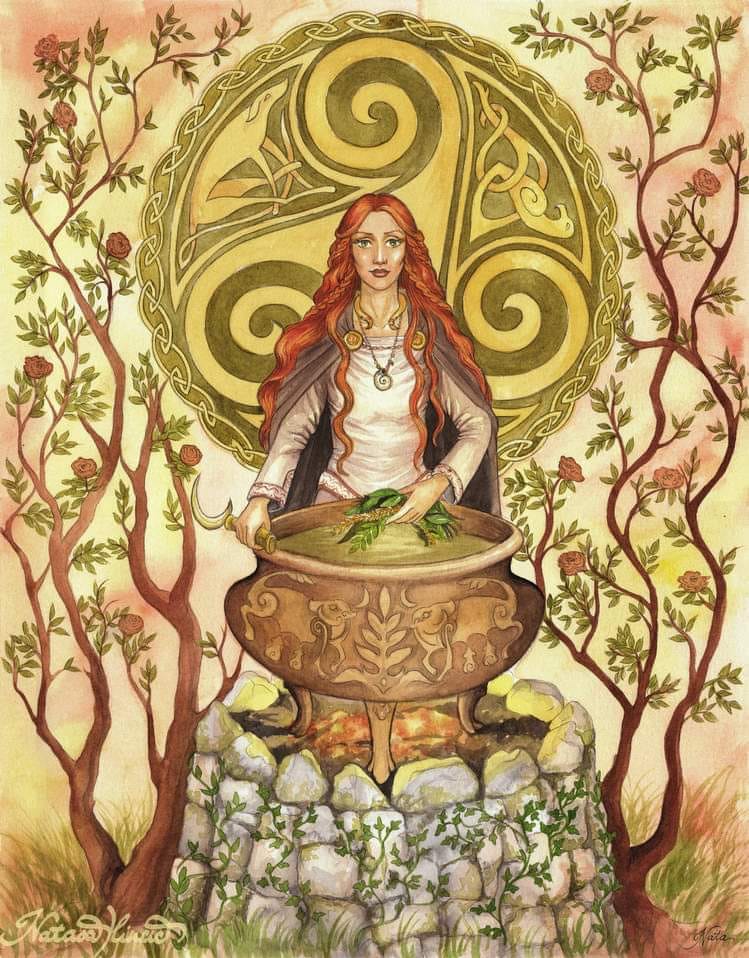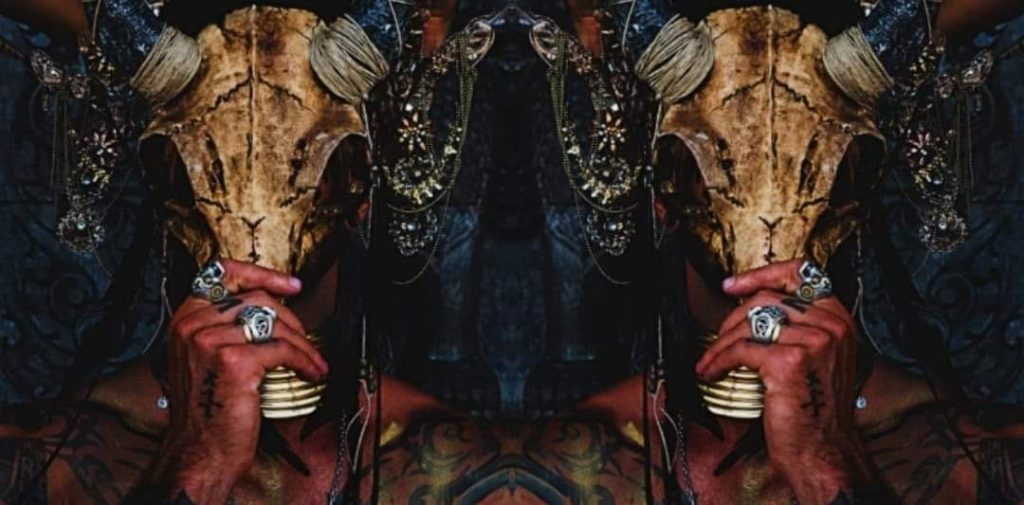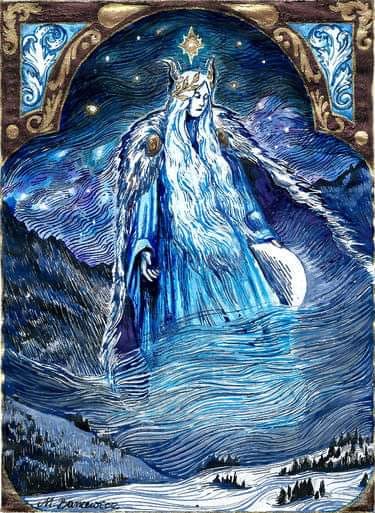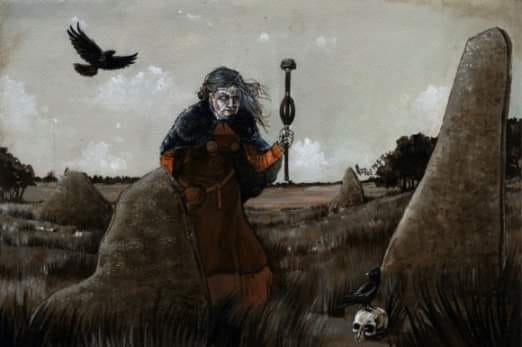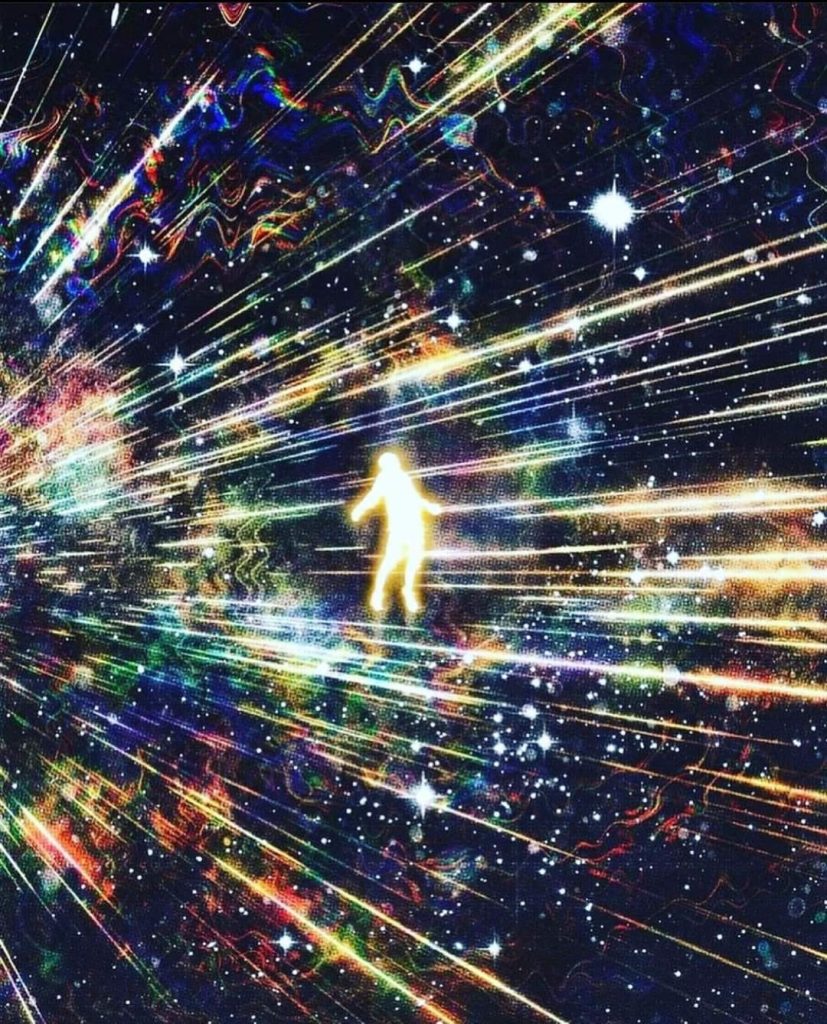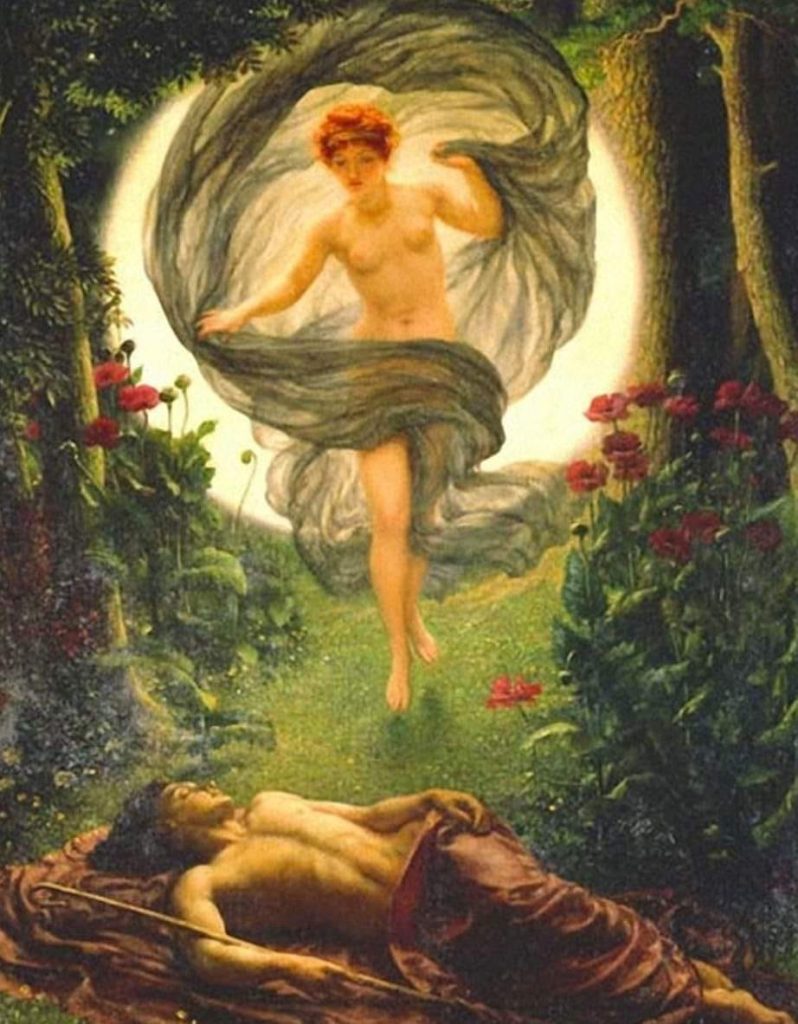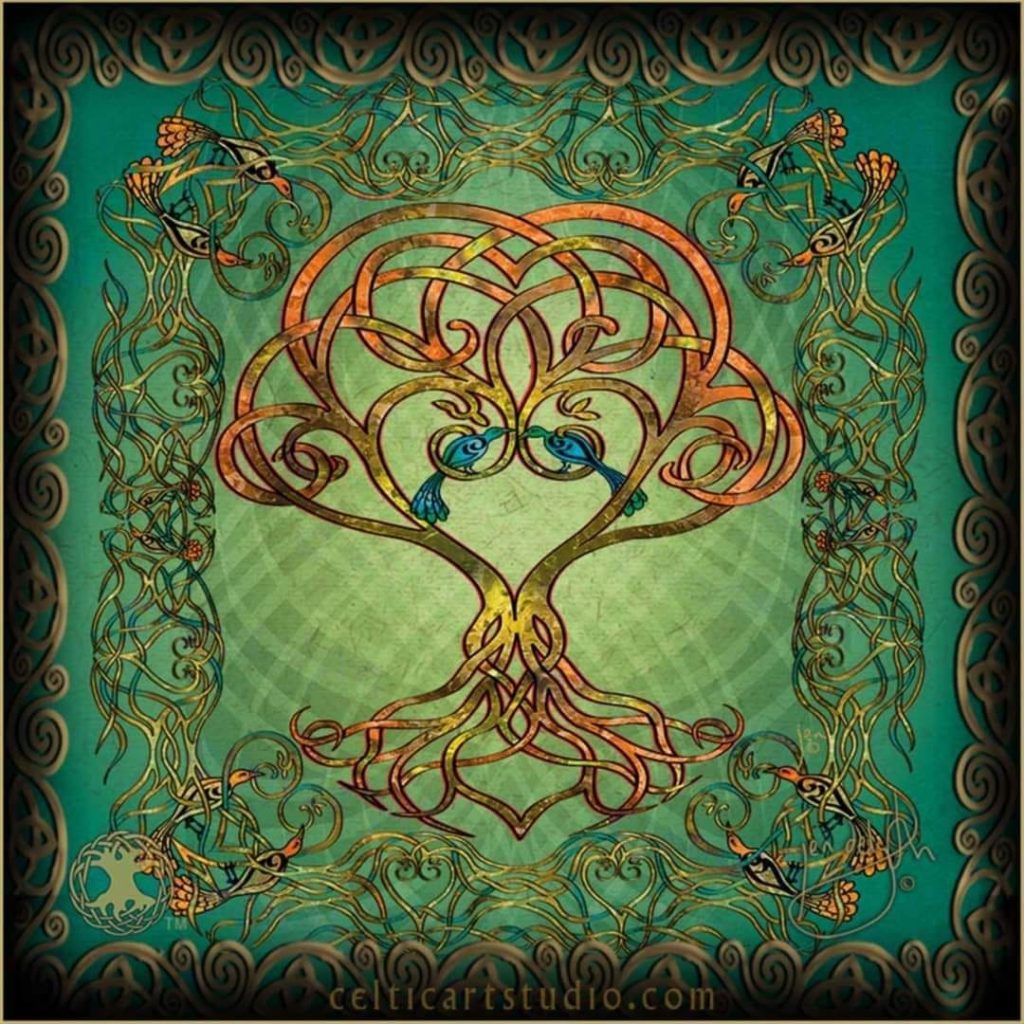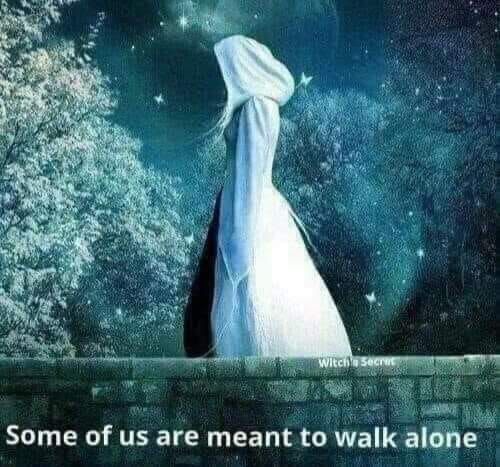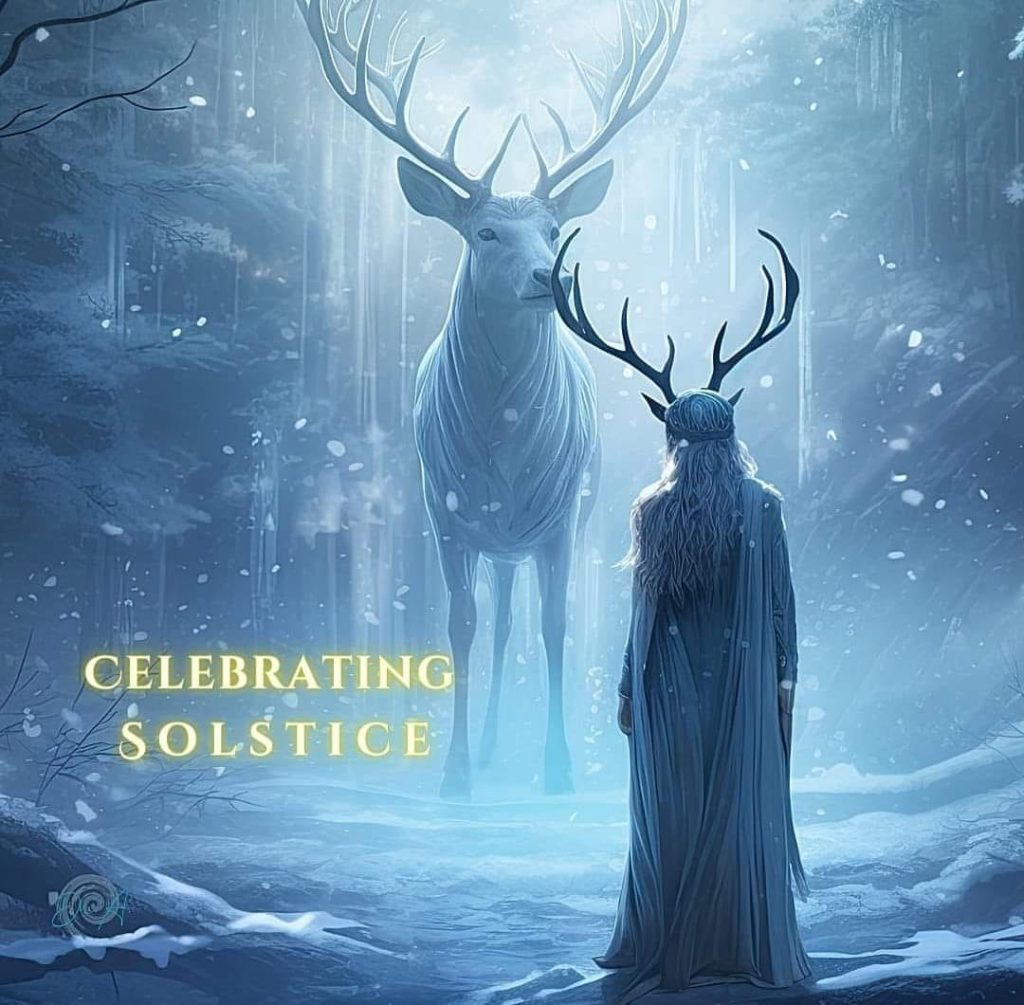Dragon Magick is a unique form of magick that draws upon the energy and wisdom of dragons. Dragons are often seen as guardians of hidden knowledge and symbols of strength and power. Practicing Dragon Magick allows us to tap into these energies, offering us guidance and protection as we navigate the challenges of life.
To begin your journey into Dragon Magick, here are some fundamental steps:
Study and Research: Start by immersing yourself in the world of dragons. Read books, explore online resources, and learn about the various dragon myths, cultures, and traditions from around the world. The more you know about these majestic creatures, the better you can connect with their energy.
Meditation and Visualization: Meditation is a crucial part of Dragon Magick. Find a quiet and peaceful space, close your eyes, and envision a dragon. Visualize its form, color, and energy. Through meditation, you can establish a connection with the dragons’ spiritual realm.
Create a Sacred Space: Design a personal altar or sacred space dedicated to Dragon Magick. This space should be adorned with dragon-related items, such as figurines, candles, crystals, and images. This is where you’ll perform your rituals and connect with dragon energies.
Spells and Rituals: Craft your own spells and rituals or find existing ones to suit your needs. Dragon Magick spells often involve invoking the assistance of dragons in various aspects of life, from protection and healing to wisdom and abundance.
How to Summon Dragons for Help
Summoning dragons is a sacred and powerful aspect of Dragon Magick. When you seek their guidance or assistance, it’s essential to do so with respect and intention. Here’s how you can summon dragons for help:
Prepare Your Sacred Space: Ensure that your altar or sacred space is clean and free of distractions. Light some dragon-themed candles and incense to create an inviting atmosphere.
Clear Your Mind: Before invoking the dragons, clear your mind through meditation. Focus on your intention and what you seek from the dragons.
Invocation: Speak or chant an invocation to call upon the dragons. You can create your own words or find existing invocations. Be sincere and respectful in your request.
Offering: It’s a tradition to leave an offering for the dragons. This could be a small token, a crystal, or some incense. It symbolizes your appreciation and respect.
Listen and Feel: After invoking the dragons, pay attention to any signs or messages they may send. These can come in the form of feelings, visions, or even dreams.
The Different Color Dragons and What They Can Help You With
Dragons come in various colors, each representing different qualities and attributes. Let’s explore some of the most common colors and what they can help you with:
Red Dragons: Red dragons are symbols of courage, strength, and passion. They can assist with matters of protection, vitality, and motivation. When facing challenges that require bold action, red dragons are powerful allies.
Blue Dragons: Blue dragons are associated with healing, wisdom, and serenity. They can help with emotional balance, tranquility, and mental clarity. Call upon blue dragons when seeking guidance in matters of the heart and mind.
Green Dragons: Green dragons are linked to growth, abundance, and renewal. They can aid in matters of prosperity, fertility, and environmental healing. Seek their assistance when working on projects related to growth and prosperity.
White Dragons: White dragons symbolize purity, truth, and spirituality. They can guide you in seeking truth and purity in your spiritual journey. They offer protection from negative influences and support on your quest for enlightenment.
Black Dragons: Black dragons are often misunderstood but can be valuable allies in shadow work and transformation. They help you confront and overcome your deepest fears, making way for personal growth and empowerment.
Gold Dragons: Gold dragons represent wisdom, enlightenment, and divine guidance. They can offer profound insights and help you connect with your higher self. Seek their assistance in matters of spiritual evolution and self-realization.
Dragon Magick and Elemental Associations
In the enchanting world of Dragon Magick, the elemental associations of dragons play a significant role. Much like other magical practices that draw upon the power of the four classical elements—earth, air, fire, and water—Dragon Magick aligns various types of dragons with these elemental forces. This connection allows practitioners to harness specific energies and qualities to enhance their magical workings.
Earth Dragons: These mighty creatures are closely tied to the element of earth. Earth dragons are often seen as guardians of the physical realm, offering strength, stability, and protection. Practitioners working with earth dragons can seek their assistance in matters related to grounding, abundance, fertility, and overall stability in life. When treading the path of Dragon Magick with an earth dragon by your side, you may find your spells and rituals anchored in the solid foundation of the earth, providing a sense of security and abundance.
Air Dragons: Dragons aligned with the element of air are associated with intellect, clarity, and communication. They hold the wisdom of the skies and can guide you in matters of knowledge, creative inspiration, and enhancing your mental faculties. When working with air dragons, you may find your thoughts and intentions taking flight, helping you gain new perspectives and fostering open communication in your magical endeavors.
Fire Dragons: Fire dragons embody the fierce and transformative power of the element of fire. They are linked to passion, courage, and the ignition of change. When you call upon a fire dragon, be prepared to unleash your inner power, ignite your passions, and overcome obstacles with determination and strength. These dragons can be particularly helpful in protection spells, personal growth, and any magical work that requires a fiery spark.
Water Dragons: Water dragons, as you might expect, are attuned to the element of water. They are associated with emotions, intuition, and the ebb and flow of life. Working with water dragons can help you navigate the depths of your emotions, enhance your intuition, and connect with the mysteries of the subconscious. In your magical practices, water dragons can be invaluable allies for healing, purification, and enhancing your emotional intelligence.
To work with dragons aligned with a specific element, it is crucial to understand the unique qualities and characteristics associated with that element. When performing spells or rituals, practitioners can call upon the corresponding elemental dragon to amplify the energy they wish to channel. For example, when seeking emotional healing, you might invoke the assistance of a water dragon, or when pursuing a creative project, an air dragon can offer inspiration.
Incorporating elemental associations into your Dragon Magick practice not only adds depth to your magical workings but also strengthens your connection with the natural world. By aligning with the elemental energies of earth, air, fire, and water through dragon companionship, you can create a more profound and harmonious connection between your intentions and the forces of nature. Each elemental dragon brings a unique flavor to your practice, enriching your journey through the mystical realms of Dragon Magick.
Dragon Familiars: Mystical Companions
In the realm of magic and mystical practice, the concept of familiars has long held a place of reverence. Familiars are often seen as guides, protectors, and companions for those who traverse the path of the mystic. While cats, owls, and other creatures have frequently been associated with familiars, the mystical world of Dragon Magick offers a unique perspective – the notion of dragon familiars.
Connecting with Dragon Familiars
A dragon familiar is a mythical being that has chosen to ally itself with a practitioner of Dragon Magick. This sacred bond is formed through mutual respect, trust, and a shared spiritual journey. Those fortunate enough to connect with a dragon familiar find themselves gifted with a remarkable companion on their magical endeavors.
Benefits of a Dragon Familiar:
Guidance and Wisdom: A dragon familiar serves as a wellspring of wisdom and guidance. Their ancient knowledge and profound understanding of the spiritual realms can provide invaluable insights for practitioners. They often act as mentors, helping individuals navigate the complexities of their magical path.
Protection and Warding: Dragon familiars are fierce protectors. They safeguard their human companions from negative energies, psychic attacks, and spiritual threats. The presence of a dragon familiar can create a powerful protective barrier around the practitioner.
Enhanced Magical Abilities: The connection with a dragon familiar can amplify one’s magical abilities. Practitioners often find that their spells and rituals are more potent and effective with the assistance of their familiar. They act as conduits for channeling dragon energy into magical workings.
Spiritual Growth: Dragon familiars are catalysts for spiritual growth and transformation. Their profound influence can facilitate personal evolution, deepen spiritual insights, and help practitioners reach higher levels of consciousness.
Emotional Support: In times of emotional turmoil or spiritual crisis, dragon familiars offer solace and emotional support. Their presence can be comforting, providing a source of strength during challenging moments.
Responsibilities of Having a Dragon Familiar:
While the benefits of having a dragon familiar are profound, the relationship also carries responsibilities. Here are some key considerations:
Mutual Respect: The relationship between a practitioner and their dragon familiar is built on mutual respect. It is essential to honor the dragon’s autonomy and not attempt to control or dominate them.
Communication: Establish open and clear communication with your familiar. This can involve meditation, dreams, or divination techniques to receive guidance and insights from your companion.
Protection and Care: Just as they protect you, it is your responsibility to protect and care for your dragon familiar. Ensure they have a safe and energetically nurturing environment.
Mutual Growth: The relationship should be a mutually beneficial one. The practitioner should not merely seek to exploit the dragon’s powers but should also assist the dragon in their own spiritual growth and evolution.
Confidentiality: Maintain the confidentiality of your interactions with your dragon familiar. It is considered respectful to keep many aspects of your connection private and sacred.
Offerings and Gratitude: Express gratitude and make offerings to your dragon familiar regularly. These can be physical offerings such as crystals or herbs, or simply expressions of thanks during your rituals and meditations.
The concept of dragon familiars in Dragon Magick is a powerful and sacred one. When practitioners form a bond with these mythical beings, they unlock a wealth of magical potential and spiritual growth. However, this relationship should always be approached with reverence, responsibility, and a deep commitment to mutual respect and understanding. In the mystical journey of Dragon Magick, a dragon familiar is not just a companion; they are a wise and eternal friend on the path of magic and spirituality.
Guardians of the Dream Realm: Dragons in Lucid Dreaming
Dreams have always been a mysterious gateway to the subconscious, a place where the mind can roam free and explore the realms of the unknown. For practitioners of Dragon Magick, the dream realm offers a unique opportunity to connect with dragons on a profound level. Lucid dreaming, in particular, allows you to not only witness but actively engage with these magnificent creatures in your dreams.
Connecting with Dragons in Lucid Dreams
Lucid dreaming is a state of consciousness where you become aware that you are dreaming and can even influence and direct the dream’s unfolding. To connect with dragons in your dreams, it’s essential to practice lucid dreaming techniques. Here are a few tips to help get you started. Refer to our guide section for more tips on lucid dreaming.
Dream Journal: Start by keeping a dream journal. Every morning, write down your dreams, even if they seem trivial or fragmented. This practice will help you improve dream recall and recognize recurring dream symbols, including dragons.
Reality Checks: Throughout the day, perform reality checks. Question the nature of your reality by asking, “Am I dreaming?” This habit will carry over into your dreams, making it more likely that you’ll recognize when you’re in a dream.
Meditation and Visualization: Incorporate meditation and visualization techniques into your daily routine. Visualize yourself becoming aware in a dream and encountering a dragon. The more you practice, the more likely it is to occur in your dreams.
Intention Setting: Before falling asleep, set a clear intention to meet a dragon in your dream. You can do this by mentally affirming your desire to connect with these mystical beings.
Dream Incubation: Use a technique known as dream incubation, where you focus your thoughts and intentions on a specific dream scenario, such as meeting a dragon. This plants the idea in your subconscious mind, making it more likely to manifest in your dreams.
The Significance of Dream Encounters with Dragons
Meeting dragons in your lucid dreams is a powerful and transformative experience. These dream encounters can carry deep symbolic meaning and offer valuable insights. Here’s what they may signify:
Guidance and Protection: Dragons are often seen as protectors and guides. Meeting a dragon in your dream may symbolize their willingness to offer you protection and guidance in waking life.
Unconscious Wisdom: Dragons in dreams can represent the untapped wisdom within your own subconscious. Pay attention to any messages or wisdom they impart during your dream interactions.
Inner Transformation: Dragons are creatures of transformation. Dream encounters with dragons may indicate that significant changes or personal growth are on the horizon.
Psychic Development: Some believe that dreams involving dragons can be a sign of latent psychic abilities or spiritual awakening. These dreams may mark a deepening connection to the spiritual realms.
Using Dream Experiences for Personal Growth
The wisdom gained from dream encounters with dragons can be applied to your waking life and your magical practice. Here’s how to use these experiences for personal growth:
Journal Your Dreams: Record your dream encounters with dragons in your dream journal. Reflect on the messages, guidance, or symbolism they carry.
Meditation and Integration: Use meditation to delve deeper into the meaning of your dream experiences. Integrate the wisdom gained into your daily life and magical practices.
Set Intentions: Before sleep, set intentions for specific areas of your life where you seek guidance or transformation. Ask the dragons for assistance and clarity in these areas during your dream encounters.
Share and Seek Guidance: Discuss your dream experiences with fellow practitioners of Dragon Magick or dream interpretation experts to gain different perspectives and insights.
Meeting dragons in your lucid dreams is a magical and enlightening experience, one that can deepen your connection with these mystical beings and provide invaluable guidance and wisdom. As you explore the dream realm with an open heart and an inquisitive mind, you’ll find that the dragons are not just guardians of the physical world but also enchanting guides in the realm of dreams.
Dragon Magick and Healing
In the realm of Dragon Magick, the role of dragons extends beyond mere mystical symbolism and into the realm of healing. Dragons are believed to possess immense energies that can be harnessed for physical, emotional, and spiritual healing. This ancient practice intertwines the raw power of these majestic beings with the healing energies they offer to those who seek their aid.
Harnessing Dragon Energy for Healing
Physical Healing: In Dragon Magick, dragons are often revered for their ability to infuse one’s being with vitality and strength. To channel dragon energy for physical healing, practitioners often perform rituals or meditations where they invite the assistance of dragons. By visualizing the dragon’s healing breath or light surrounding and permeating the body, practitioners believe they can promote physical wellness and aid in recovery from illness or injury.
Emotional Healing: Dragons also play a crucial role in emotional healing. Their wisdom and guidance can offer solace and support in times of emotional turmoil. Through meditation or rituals, practitioners can call upon the energy of compassionate dragons to soothe emotional wounds, providing a sense of comfort and inner peace.
Spiritual Healing: For spiritual healing, dragons serve as conduits for enlightenment and spiritual growth. Their ancient wisdom and connection to higher realms can guide practitioners on their spiritual journey. By invoking the energy of dragons, individuals can seek clarity, understanding, and alignment with their higher selves.
Simple Healing Rituals and Techniques
Dragon Breathing Meditation: Find a quiet and peaceful space. Close your eyes and visualize a healing dragon—choose the color associated with the type of healing you seek (e.g., green for physical healing, blue for emotional healing). Envision the dragon breathing its healing energy upon you. Breathe deeply, imagining you’re inhaling the dragon’s healing breath and exhaling any ailments or negativity.
Healing Altar or Grid: Create a healing altar or crystal grid dedicated to dragon healing. Place items associated with healing (crystals, herbs, images of dragons) in a pattern, inviting the energy of dragons to infuse these items. Sit near the altar or grid, focusing on the intention of healing and absorbing the energy emitted.
Dragon Chant or Affirmation: Develop a chant or affirmation that calls upon the healing energy of dragons. Repeat this chant during meditation or as part of a ritual to strengthen the connection with dragon healing energy.
Healing Visualization: During meditation, visualize yourself in a serene and healing environment, surrounded by gentle, radiant dragon energy. Imagine this energy enveloping you, permeating every cell of your body, bringing about the healing you seek.
Cleansing Ritual with Dragons: Use the power of dragons in a cleansing ritual. Light a candle representing the color associated with the type of healing you desire. State your intention for healing and invite the assistance of the dragons, asking them to cleanse and purify your body, mind, and spirit.
Remember, the efficacy of these practices lies in the intention, belief, and connection established with the dragon energies. Approach these healing rituals with sincerity and an open heart, allowing the mystical power of the dragons to assist in your healing journey.
Connecting with Dragon Energy in Nature
In the enchanting world of Dragon Magick, the natural world is viewed as a canvas of mystical energies, and one of the most potent and profound sources of these energies is the elemental world itself. To practitioners of this ancient tradition, connecting with dragon energy in nature is not only a ritual but a deeply spiritual and transformative experience. The natural elements—earth, air, fire, and water—are believed to hold the essence of dragons, and attuning oneself to these energies can be a powerful and enlightening practice.
Techniques for Connecting with Dragon Energy in Nature:
Seek Dragon’s Sanctuaries: Certain natural locations are believed to hold a strong connection to dragon energy. Mountains, cliffs, caves, and rocky terrain are often considered dragon sanctuaries. Waterfalls, lakes, and bodies of water, with their constant flow and change, are also believed to be inhabited by dragons. Seek out these places and spend time there to absorb the elemental energies.
Observation and Meditation: When in a dragon sanctuary, take the time to observe the natural surroundings. Breathe deeply and let the energy of the place wash over you. Find a comfortable spot to sit or lie down and meditate. In your meditation, visualize the presence of dragons in the natural elements surrounding you.
Breathing and Elemental Connection: As you meditate in these natural settings, practice elemental breathing. Inhale deeply, imagining you are drawing the essence of the specific element into your body: earth for grounding, air for clarity, fire for passion, and water for emotional healing. Feel the elemental energy coursing through you as you exhale.
Offerings and Tokens: To show respect and gratitude to the dragon energy in the natural world, consider leaving offerings or tokens. These can be crystals, herbs, or even words of appreciation. It’s a gesture of acknowledgement and a means of creating a bond with the dragons of the land.
Symbolic Visualization: Visualize the dragons present in these natural surroundings. Imagine their forms in the shapes of rocks, cliffs, or the patterns of flowing water. See their eyes in the glittering reflections of sunlight or moonlight on the water. As you practice this, you may begin to sense the presence of these mythical beings more acutely.
Elemental Communion Ritual: Perform a ritual to establish a deeper connection with the elemental energies and the dragons that reside within them. This can include chanting, invoking the elements, and offering your intentions and gratitude for the connection.
Elemental Magic: As you spend time in these natural dragon sanctuaries, consider engaging in elemental magic, such as grounding exercises, weather-working, or rituals that honor the elemental forces. Align your magical practice with the energies of the land and the dragons that inhabit it.
Maintain a Nature Journal: Keep a journal where you record your experiences, thoughts, and feelings during your encounters with dragon energy in nature. This can help you track your progress and reflect on the significance of these connections.
By embracing the natural world and attuning oneself to the elemental energies believed to be inhabited by dragons, practitioners of Dragon Magick can deepen their spiritual connection and access the ancient wisdom and power that resides within these mystical beings. These encounters with dragon energy in nature offer not only a profound sense of communion with the elements but also a doorway to a greater understanding of the mystical realms and the magic they hold.
Dragon Altar and Tools
Creating a dragon-themed altar is a sacred and transformative act in Dragon Magick. Your altar serves as a focal point for your rituals, a place of connection with dragon energies, and a reflection of your devotion to this mystical practice. As you embark on this journey, it’s essential to understand the significance of various tools and how to set up a visually stunning and energetically charged space for your Dragon Magick practice.
Setting Up Your Dragon Altar:
Choosing the Location: Select a quiet and undisturbed location for your altar. It can be indoors or outdoors, depending on your preference and the availability of space. Ensure that the energy in the area is peaceful and conducive to your practice.
The Altar Surface: Your altar can be as simple as a dedicated table, shelf, or any flat surface. It’s preferable to choose a surface that resonates with the earth element, such as wood or stone, to ground and anchor the energy.
Altar Cloth: Cover your altar with a dragon-themed cloth. The cloth not only adds an aesthetic touch but also defines the sacred space of your altar.
Candles: Place dragon-themed candles on your altar. Red, green, blue, and black candles can represent the elemental dragons and their unique energies. Lighting these candles symbolizes the presence of dragons and invokes their power.
Dragon Statues and Figurines: Dragon statues are central to a dragon-themed altar. Choose statues that resonate with your intuition or specific intentions. Dragon figurines are believed to embody the essence of the dragons they represent. Position them as guardians and sentinels of your sacred space.
Crystals and Gemstones: Select crystals and gemstones that align with your purpose. Clear quartz for clarity, amethyst for intuition, and carnelian for courage are excellent choices. Arrange these stones in a manner that enhances the energy flow on your altar.
Herbs and Incense: Burn dragon-themed incense, such as dragon’s blood or a blend of earthy scents, to purify and charge your altar. You can also use herbs and dried flowers with dragon associations, such as lavender or rosemary, for added energetic significance.
Ancestral Items: Incorporate any ancestral items or personal mementos that hold significance for you and relate to your Dragon Magick practice. These can enhance the personal and spiritual connection with your altar.
Offerings: Create a small dish for offerings to the dragons. These can be simple offerings like herbs, crystals, or small tokens of appreciation. Offerings show respect and gratitude to the dragon energies.
Setting Up Your Altar Space:
Cleansing: Before setting up your altar, cleanse the area to remove any stagnant or negative energy. You can use a smudging ritual with sage, cedar, or dragon’s blood incense.
Centerpiece: Position the largest dragon statue or figurine as the centerpiece of your altar, symbolizing the central connection to the dragon energies.
Candle Placement: Arrange the elemental candles around the central dragon figurine, with each candle corresponding to one of the four elements.
Crystals and Gemstones: Place the crystals and gemstones around the candles, ensuring they resonate with the intentions of your practice.
Incense Holder: Position the incense holder on your altar, ready for use during rituals.
Ancestral Items: If you have ancestral items, position them in a manner that resonates with the overall design of your altar.
Offering Dish: Set up the offering dish near the center of your altar, as an invitation for the dragons to accept your gratitude.
Maintaining Your Dragon Altar:
Regular Cleansing: Keep your altar clean and energetically pure by performing regular cleansing rituals. This can include smudging, as well as energetic clearing and charging with intention.
Updating the Theme: Over time, you may want to change or add items to your altar based on your evolving practice and goals. Trust your intuition and make adjustments as needed.
Connecting and Meditating: Spend time at your altar, meditating, and connecting with the dragon energies. This enhances the energetic charge of your sacred space.
Rituals and Spells: Use your altar as a dedicated space for performing Dragon Magick rituals and spells. The energetic connection you’ve established will amplify the effectiveness of your practices.
Creating a dragon-themed altar is a beautiful and powerful way to deepen your connection with the mystical world of Dragon Magick. By thoughtfully selecting tools and items that resonate with your intentions and setting up your altar with care, you create a space where you can work in harmony with the energies of dragons, enhancing your magical practice and spiritual journey.
Dragon Magick and Elemental Rituals
In the captivating world of Dragon Magick, the four classical elements—earth, air, fire, and water—play a significant role, and rituals that align with these elements offer practitioners a powerful means to harness the energy of dragons. These elemental rituals allow for a deeper connection with the natural forces that underpin the world of magick. Here, we’ll explore specific rituals that focus on harnessing the elemental energy of dragons for purposes ranging from protection and purification to transformation and manifestation.
Earth Dragon Protection Ritual:
Intent: Protection, Stability, and Security
What You’ll Need:
A small representation of an earth dragon (statue or image)
A black or green candle
A bowl of salt
Earthy incense (such as patchouli or cedar)
A piece of black tourmaline or obsidian (for grounding and protection)
Begin by setting up your ritual space. Place the earth dragon representation at the center.
Light the black or green candle to represent the element of earth.
Sprinkle the salt around the dragon figure in a protective circle. As you do this, envision a shield forming around you.
Light the earthy incense and pass the dragon figure through the smoke to cleanse and purify it.
Hold the black tourmaline or obsidian and ask the earth dragon for protection, stability, and security. Place the crystal in front of the dragon figure.
Meditate on the earth element’s grounding and protective qualities, visualizing yourself enveloped in a shield of earth energy.
When you feel the connection is strong, thank the earth dragon, and extinguish the candle. You can leave the salt circle in place for ongoing protection.
Air Dragon Clarity Ritual:
Intent: Mental Clarity, Communication, and Inspiration
What You’ll Need:
A small representation of an air dragon (statue or image)
A white or yellow candle
Incense with a light, airy scent (such as lavender or frankincense)
A clear quartz crystal (for mental clarity and amplification)
Set up your ritual space, placing the air dragon representation at the center.
Light the white or yellow candle to symbolize the element of air.
Burn the airy-scented incense and pass the dragon figure through the smoke to cleanse and purify it.
Hold the clear quartz crystal and ask the air dragon for mental clarity, communication, and inspiration. Place the crystal in front of the dragon figure.
Meditate on the air element’s qualities of mental clarity and the free flow of ideas. Visualize your mind becoming clear and focused.
When you sense a strong connection, thank the air dragon, and extinguish the candle.
Fire Dragon Transformation Ritual:
Intent: Transformation, Empowerment, and Overcoming Obstacles
What You’ll Need:
A small representation of a fire dragon (statue or image)
A red or orange candle
Fiery-scented incense (such as cinnamon or clove)
A piece of carnelian or red jasper (for courage and transformation)
Prepare your ritual space with the fire dragon representation at the center.
Light the red or orange candle to represent the element of fire.
Burn the fiery-scented incense and pass the dragon figure through the smoke to cleanse and purify it.
Hold the carnelian or red jasper and ask the fire dragon for courage, transformation, and the strength to overcome obstacles. Place the crystal in front of the dragon figure.
Meditate on the fire element’s qualities of transformation and empowerment. Visualize yourself overcoming challenges and emerging stronger.
When you feel a strong connection, thank the fire dragon and extinguish the candle.
Water Dragon Manifestation Ritual:
Intent: Manifestation, Emotional Healing, and Intuition
What You’ll Need:
A small representation of a water dragon (statue or image)
A blue or silver candle
Water-scented incense (such as jasmine or rose)
A piece of moonstone or aquamarine (for intuition and emotional healing)
Arrange your ritual space, with the water dragon representation at the center.
Light the blue or silver candle to symbolize the element of water.
Burn the water-scented incense and pass the dragon figure through the smoke to cleanse and purify it.
Hold the moonstone or aquamarine and ask the water dragon for manifestation, emotional healing, and heightened intuition. Place the crystal in front of the dragon figure.
Meditate on the water element’s qualities of emotional healing and intuition. Visualize your desires coming to fruition and your emotions in balance.
When you sense a strong connection, thank the water dragon, and extinguish the candle.
These elemental rituals in Dragon Magick enable practitioners to tap into the diverse energies of dragons associated with the four elements. Whether you seek protection, clarity, transformation, or manifestation, these rituals empower you to work in harmony with the natural forces of the world while connecting with the mystical guidance of dragons.
Final Musings:
Dragon Magick is a fascinating and empowering path that offers a deep connection to the energy of these mythical creatures. As a woman in her forties, I can attest to the transformative potential of this practice, and I encourage you to explore it for yourself. Remember, like any magickal practice, patience and dedication are key to unlocking the full potential of Dragon Magick. May your journey be filled with wisdom, strength, and the blessings of the dragons. Embrace the mystical, for it has the power to shape your life in extraordinary ways.
